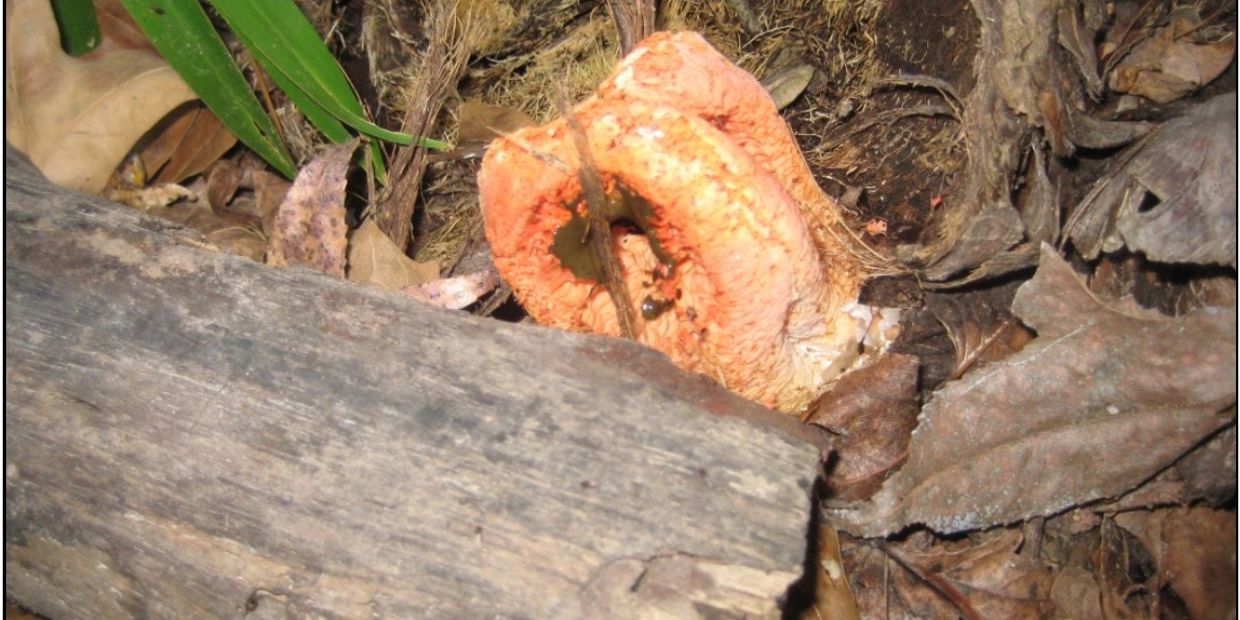Plants of Palmetto Island

Rose Mallow
Louisiana's native hibiscus, Hibiscus lasiocarpos, a perennial related to okra, cotton and hollyhock. Can grow 4-7 feet tall and are found close to water or in areas that stay damp. Flowers bloom Jun-Oct, are 6-8 inches wide, only open for 1 day and vary in shades of white to light pink. Loved by bees and butterflies.

Columned Stinkhorn
Along with the cold weather comes the emergence of the stinkhorn mushrooms. Although many species exist, Palmetto Island State Park has been blessed with the presence of Clathrus columnatus, the Columned Stinkhorn. The mushroom begins its life as a small white sac, but soon pinkish to reddish orange arms emerge rising vertically and then attaching at the top creating a roof like structure. Under this roof is housed the foul smelling olive green slime where the spores are located. The mushroom lures in insects with its pungent aroma plastering them with slime and thereby spreading its spores to new areas. Columned Stinkhorns grow on or near woody debris from October through March. Try to locate them along the hiking trails by sight or smell.
Carolina Creeper
Carolina Creeper
Carolina Creeper

Poison Ivy
Carolina Creeper
Carolina Creeper

Rattlebush or Rattle Box

These woody-based shrubs grow from 3.3–9.8 ft tall. Branches are thin and widely spreading. The orange-yellow, pea-like flowers occur in a drooping raceme on a long stem. They are often found with red lining. This plant prefers moist soils of ditches and frequently-inundated meadows, as well as depressions and the open edges of lakes, ponds and streams.

These plants flower from May to October, usually retaining many of the seed pods, which remain attached until the plant dies back to ground level for the winter. During the winter months, they lose all of their leaves and die back until spring. The seed pods are four-sided, four-winged, and about 3.9 in long. The peas rattle inside, giving this plant its common name of Rattlebush.

The seeds are poisonous, containing the toxin sesbanimide. Animals raised with the plant learn to avoid it because of the foul taste of the green and flowering plants. However, naive cattle, goats or sheep placed on pastures containing dried plants in late fall and winter are frequently poisoned. Sick animals often die within 24 hours.
Muscadines

Imagine walking through Palmetto Island State Park and coming across clusters of wild muscadine grapes. They are often called the “Grape of the South”. Late August to early September is that special time of the year where you find different types of muscadines growing on high climbing vines in the wild and in back yards. They love the forest areas, so Palmetto Island is the perfect area for them to thrive. Muscadine grapes that are found in south Louisiana can be black, purple, or yellow-green and can be eaten fresh off the vine, but their skins can be tough. Just bust open the skin and eat the delicious sweet pulp. These wild delicacies are a great food source for many birds, animals and humans. They can be used to make jellies, preserves and wine.